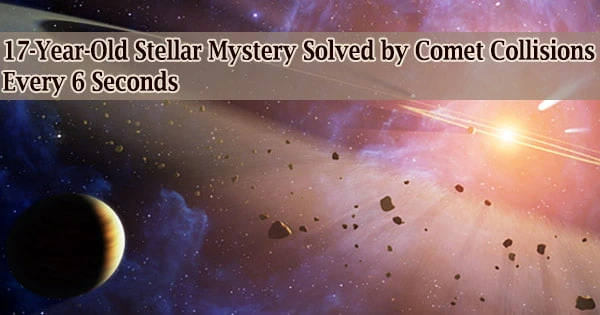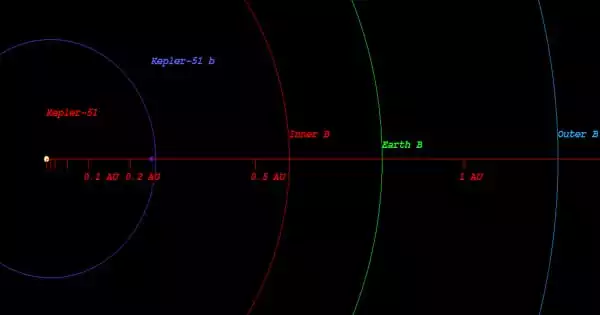Near a naked-eye star in the constellation Cetus named 49 CETI, comets have been crashing into one another every six seconds for millions of years.
Numerous dusty disks around stars have been observed during the past three decades, but only two of them 49 CETI is one have also been shown to have substantial gas circling them.
The disk of gas and dust that orbits young stars that are a million years old tends to disintegrate within a few million years, and nearly always within around 10 million years.
However, despite being supposed to be much older, 49 CETI is still being orbited by a massive amount of gas in the form of carbon monoxide molecules long after that gas should have evaporated.
“We now believe that 49 CETI is 40 million years old, and the mystery is how in the world can there be this much gas around an otherwise ordinary star that is this old,” said Benjamin Zuckerman, a UCLA professor of physics and astronomy and co-author of the research, which was recently published in the Astrophysical Journal. “This is the oldest star we know of with so much gas.”
Inseok Song, an assistant professor of physics and astronomy at the University of Georgia, and Zuckerman suggest that the strange gas originates from a very enormous disk-shaped region known as 49 CETI that is comparable to the sun’s Kuiper Belt and is located beyond Neptune’s orbit.
The dwarf planet Pluto is one of the several objects that make up the Kuiper Belt, and its combined mass is roughly one-tenth that of the Earth. However, astronomers assert that the Kuiper Belt likely had a mass that was 40 times greater than Earth’s when Earth was developing; the majority of that original mass has been lost during the following 4.5 billion years.
The Kuiper Belt analog orbiting 49 CETI has a mass of around 400 Earth masses, which is 4,000 times the Kuiper Belt’s present mass.
We now believe that 49 CETI is 40 million years old, and the mystery is how in the world can there be this much gas around an otherwise ordinary star that is this old. This is the oldest star we know of with so much gas.
Benjamin Zuckerman
“Hundreds of trillions of comets orbit around 49 CETI and one other star whose age is about 30 million years. Imagine so many trillions of comets, each the size of the UCLA campus approximately 1 mile in diameter orbiting around 49 CETI and bashing into one another,” Zuckerman said.
The carbon monoxide content of these youthful comets is probably higher than that of other comets in our solar system. The carbon monoxide escapes as a gas when they collide. These comets have collided so many times that gas has formed around these two stars as a result.
“We calculate that comets collide around these two stars about every six seconds,” he said. “I was absolutely amazed when we calculated this rapid rate. I would not have dreamt it in a million years. We think these collisions have been occurring for 10 million years or so.”
The gas that orbits 49 CETI was found in 1995 by Zuckerman and two colleagues using a radio telescope in the Sierra Nevada mountains of southern Spain, but its origin was unknown for 17 years until now.
















